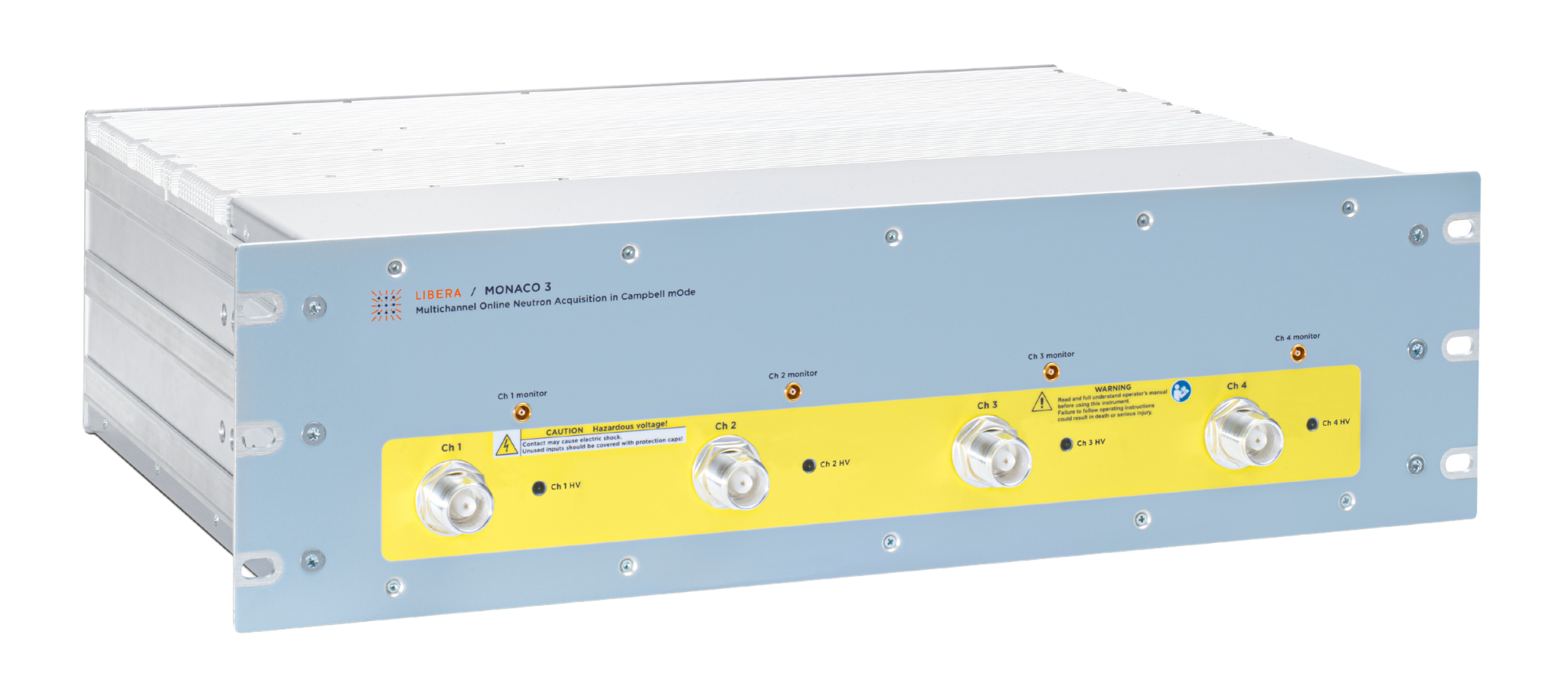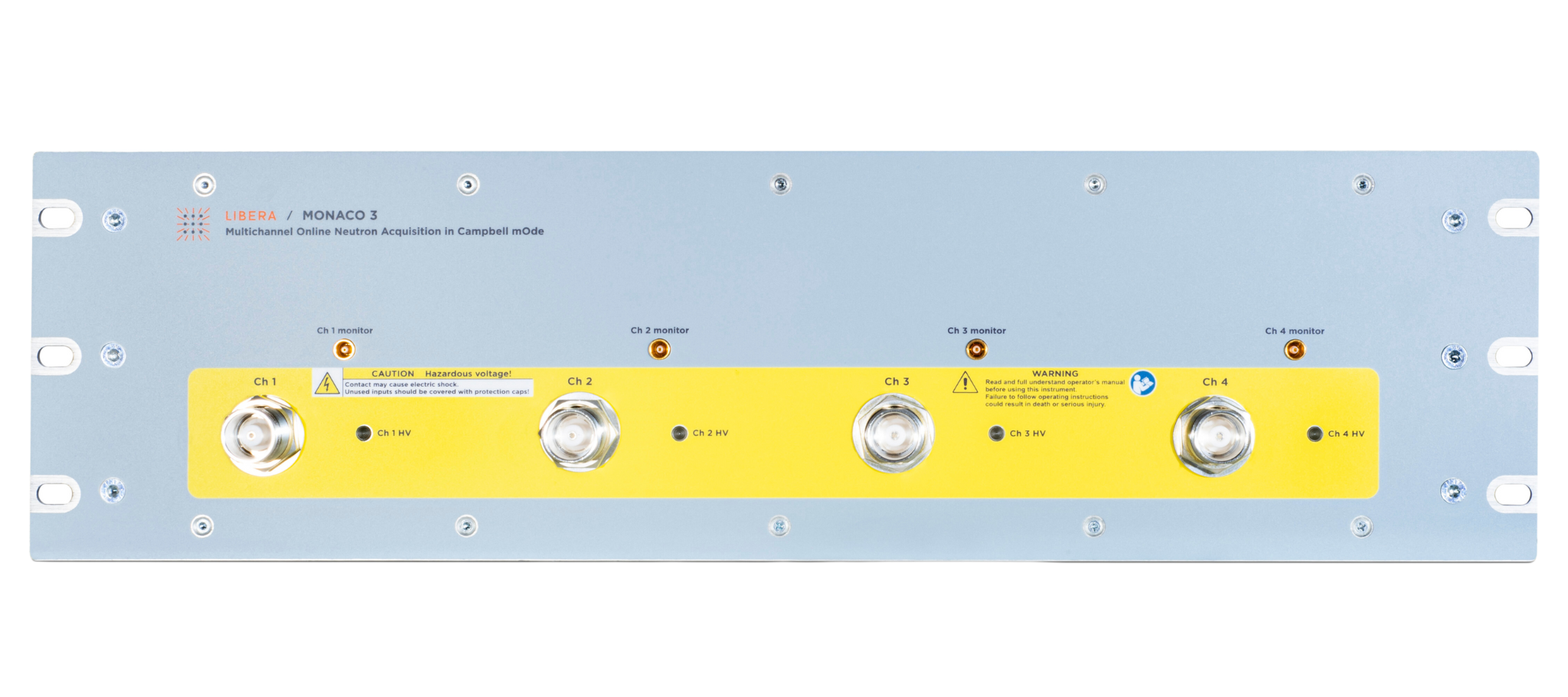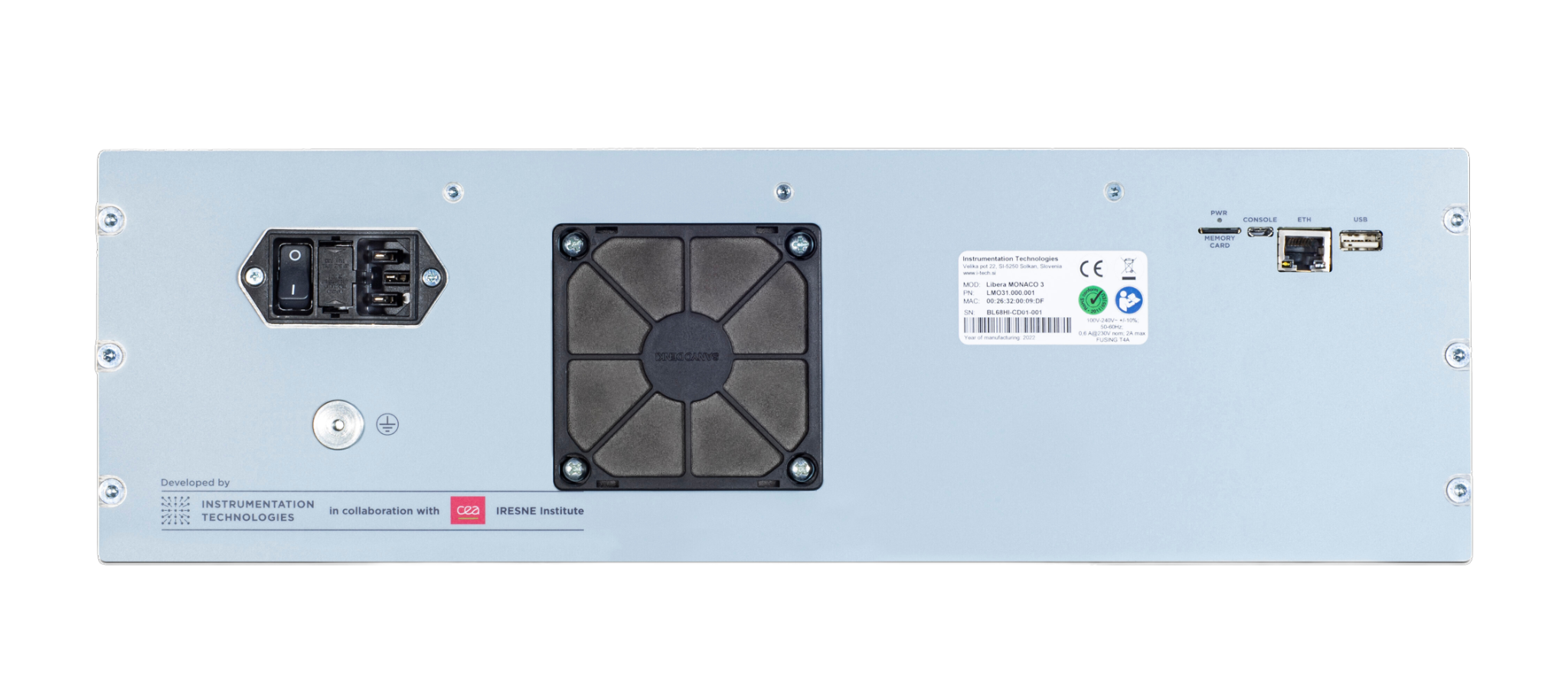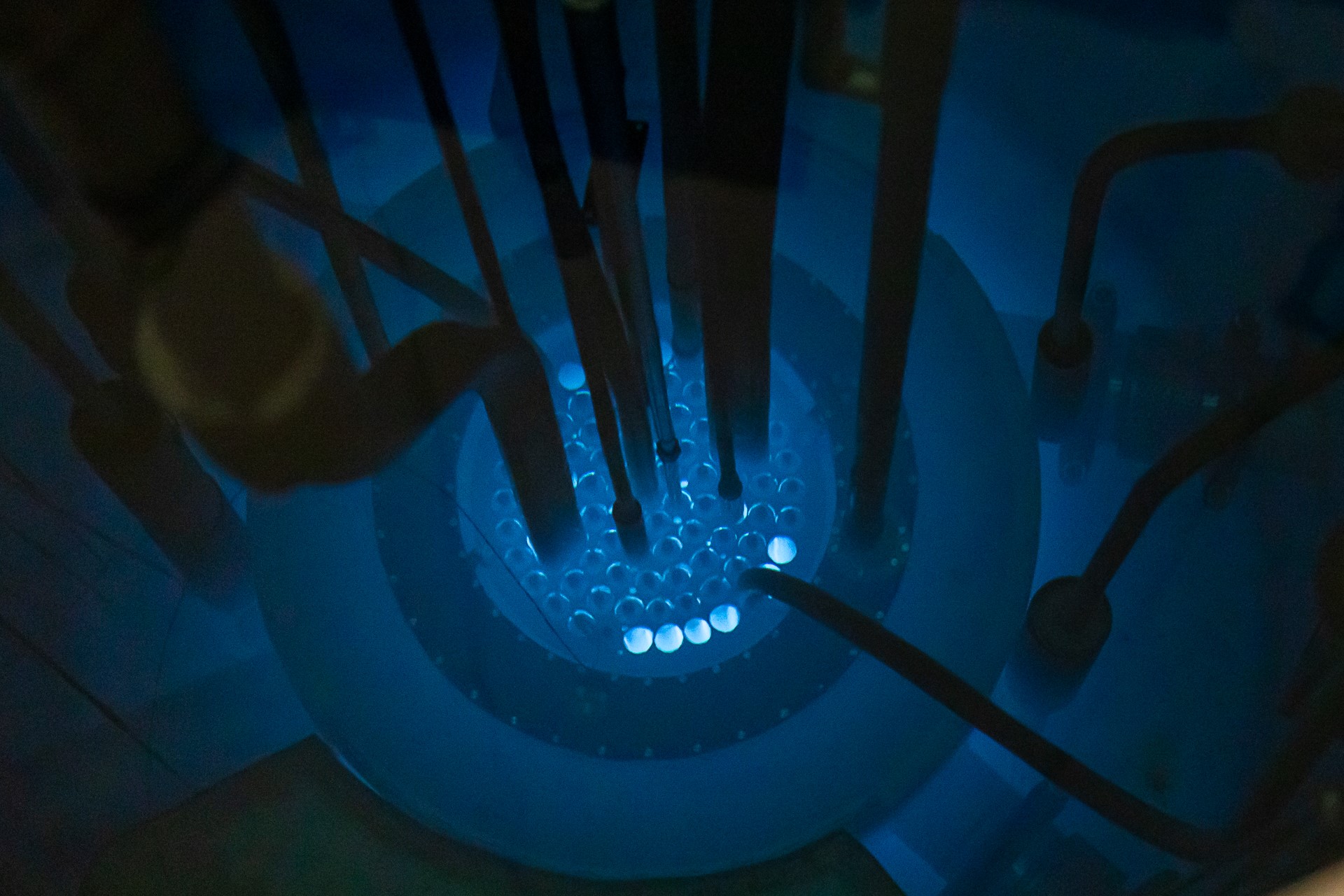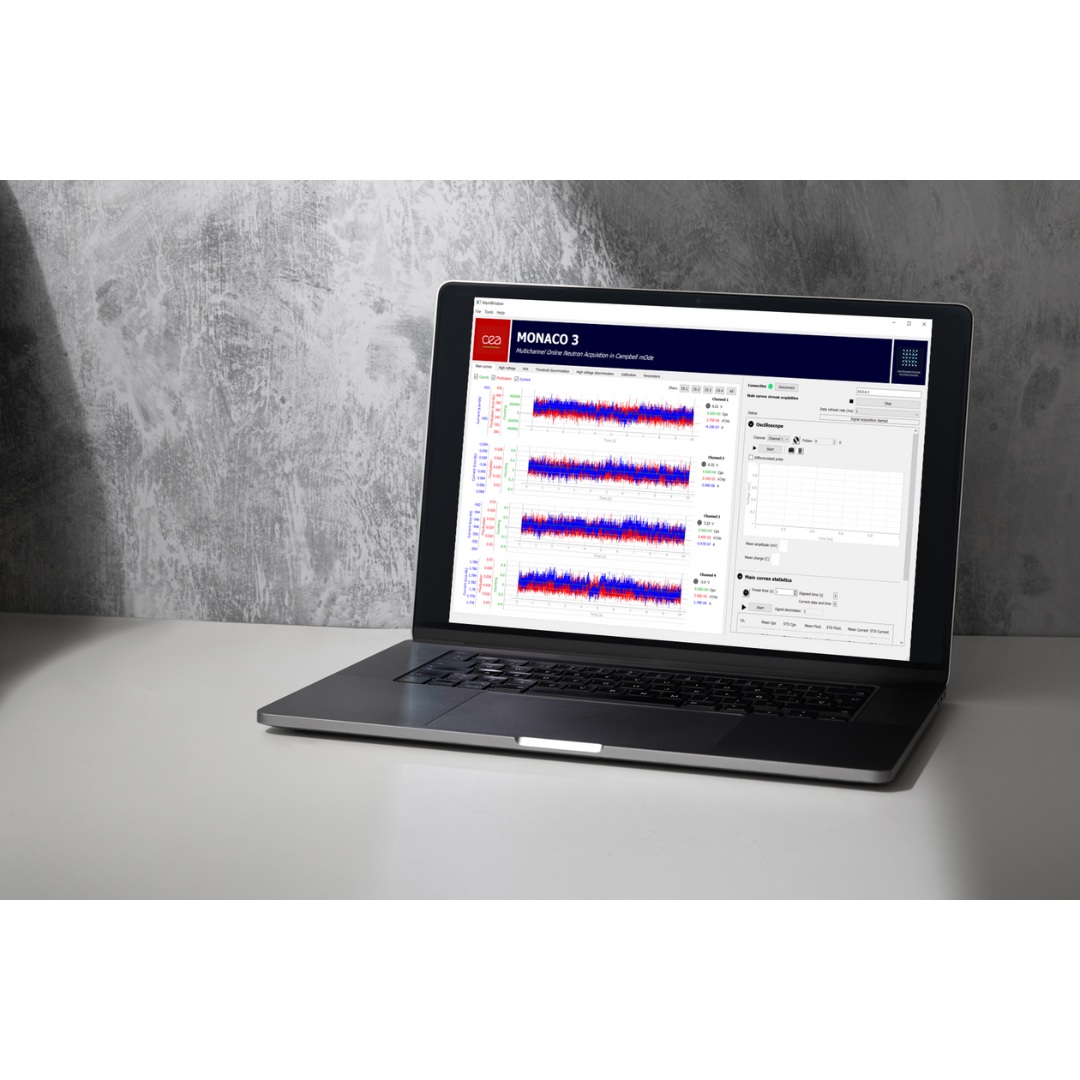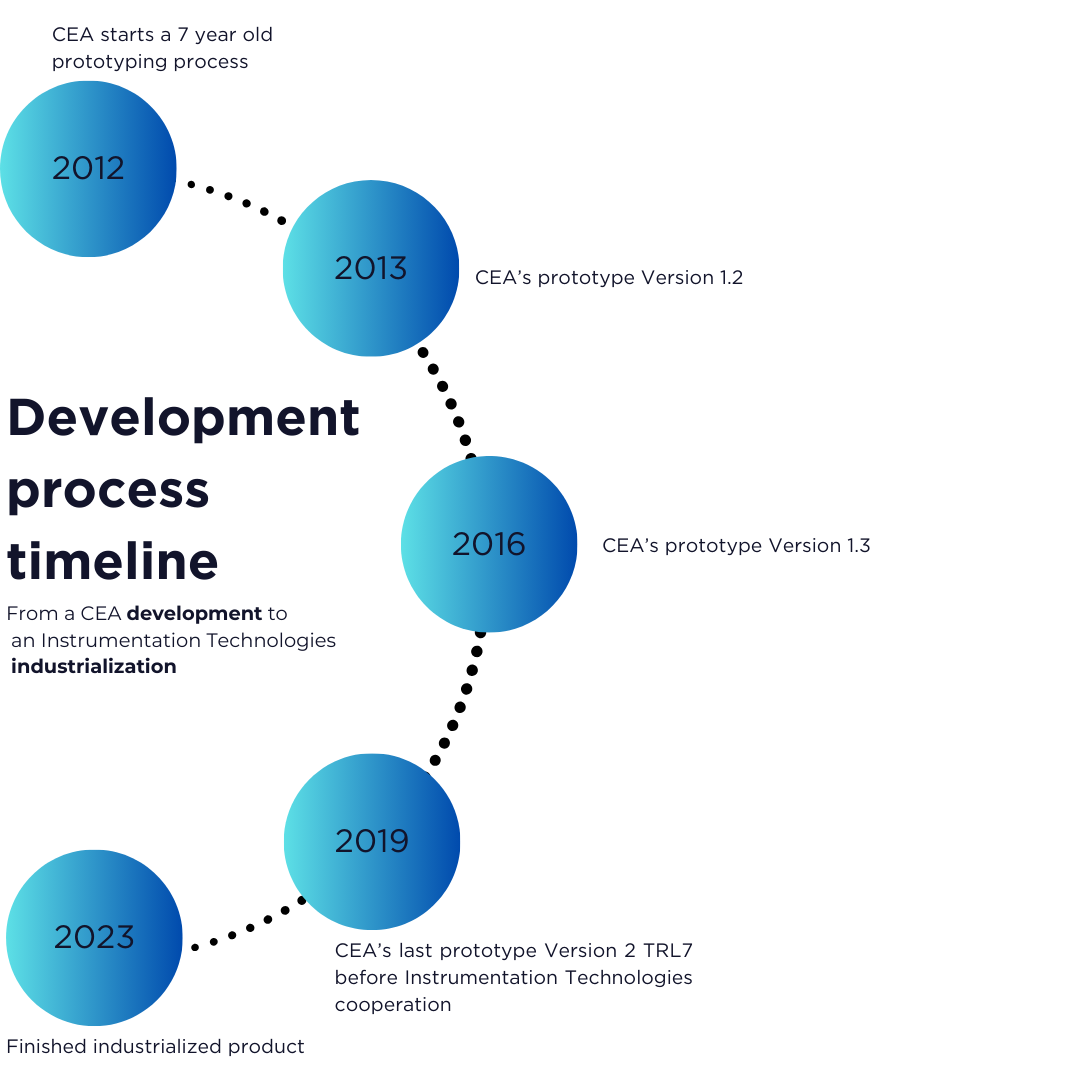Libera Monaco 3 building blocks
The signal from the detector is collected by the frontend which integrates:
- Transimpedance preamplifier unit: amplifies the current pulses coming from the detector and converts them to voltage pulses.
- High voltage unit: the front end integrates a high voltage source that can polarize the detector, it can provide positive or negative polarization.
- Current meter unit: that uses two separate measurement ranges 0 to 1µA and 0 to 1mA.
The pulses are then decoupled and digitized by the ADCs and processed within the FPGA. The digitizer unit is running a Linux-embedded system that is streaming the data on a GUI running on a local PC.
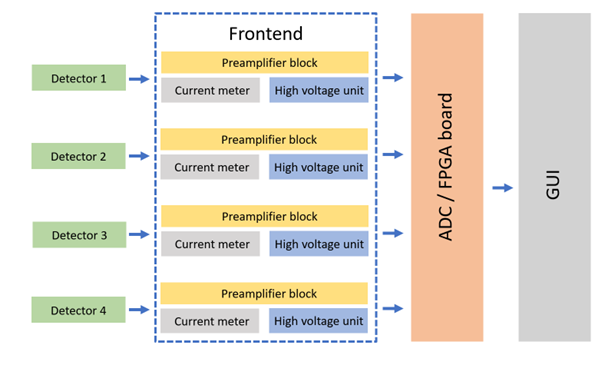
Digital Signal Processing
The system allows the user to perform:
- Fission chamber data acquisition: in parallel in Pulse, Campbell, or Current mode, depending on the fission rate in the detectors. The operator can choose the most relevant mode.
- Pulse Height Analysis (PHA): calculates the charge associated with the pulse population and provides this data in a histogram.
- Oscilloscope: In this mode, MONACO 3 works as an oscilloscope and allows to monitor and collect the single pulse signals. It integrates the single pulse charge/amplitude statistics. It integrates the single pulse charge/amplitude statistics.
- Automatic generation of saturation and pulse discrimination curves for the determination of optimum detector operating condition.
Technical specifications
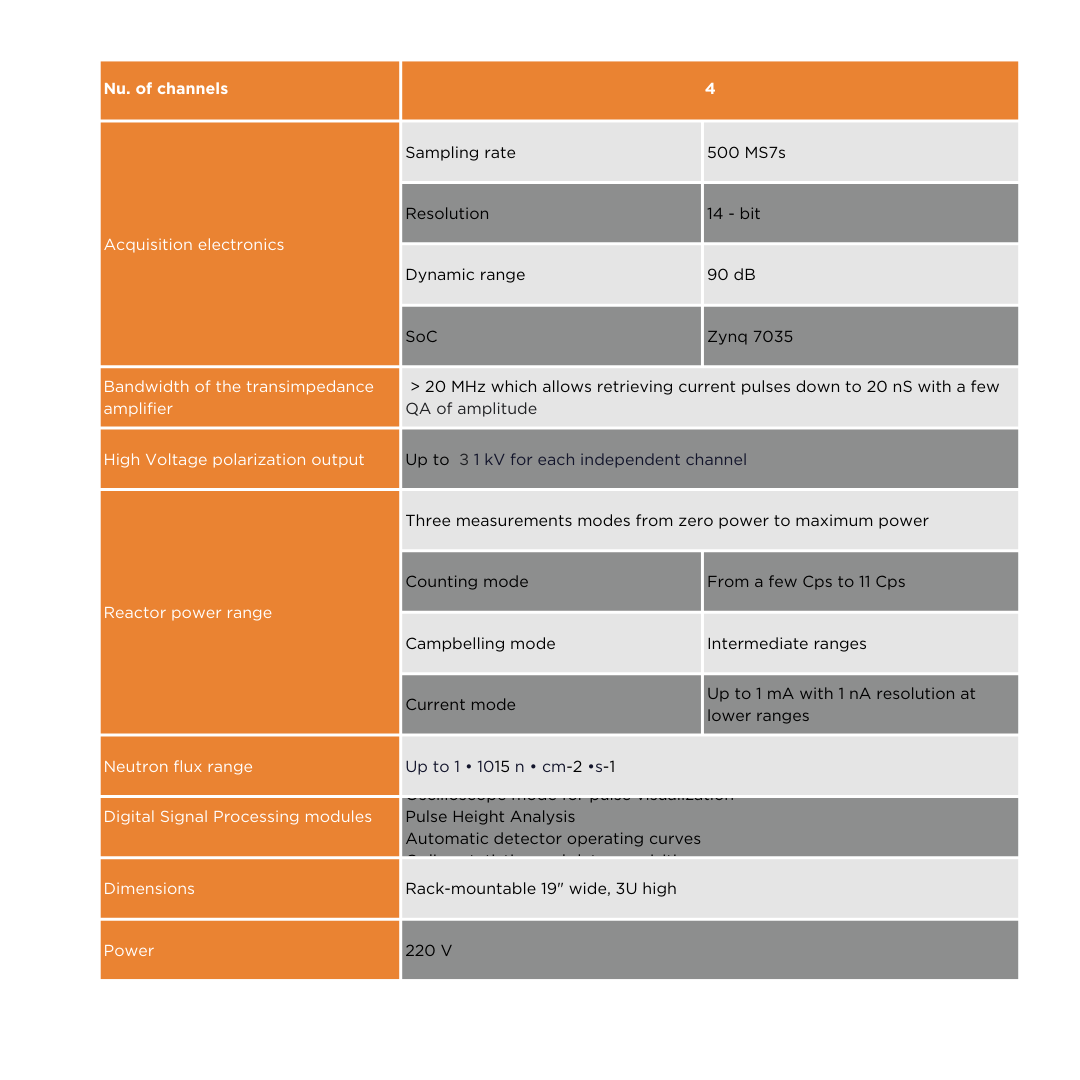
Friendly and easy to use graphical user interface, that integrates live charts, pulse charge amplitude calculation, spectra, automatic detector operating curves (saturation and discrimination), online statistics.
The main curves window allows us to visualize the 4 channels of the Libera MONACO 3 stream acquired data for each channel independently:
- Counting mode: reports the measured counts in Counts per second (Cps).
- Fluctuation mode: reports the k2 measured coefficient.
- Current mode: reports the measured current.
Testing at IJS TRIGA Ljubljana:
The preliminary results from the validation campaign at IJS TRIGA MARK II reactor in Ljubljana allowed to cover the entire reactor dynamic range from 0 to 250 kW of power. All three modes showed consistent linearity with the reactor power over expected ranges respectively.
The alignment of the three modes, spanning over 3 decade, holds promise for additional fine-tuning tailored to specific experimental conditions.
Read more about the result of testing by downloading the technical presentation.
THE SUCESS STORY BEHIND THE DEVELOPING OF MONACO
Over the course of a challenging four-year development and industrialization project, the Libera MONACO 3 system was redesigned and industrialized to create high-performance instrumentation for neutron flux measurement in nuclear research reactors.
The project demanded an interdisciplinary team of experts in nuclear physics, electrical engineering, and instrumentation, working in tandem to develop cutting-edge technologies and methodologies. The project also involved extensive testing and validation phases, with multiple iterations and refinements aimed at enhancing system performance and reliability. The industrialization efforts successfully transformed the prototype into a scalable and robust system, enabling its deployment in nuclear research reactors and fusion reactors worldwide. The successful completion of this ambitious project represents a significant advancement in the field of nuclear research. It empowers scientists and engineers to gain a deeper understanding of neutron flux behavior and facilitates more efficient reactor operation.
“We met in Portorož 4 years ago with an idea, started the project 2 years ago and we already have the result here. We’re not used to that.”
